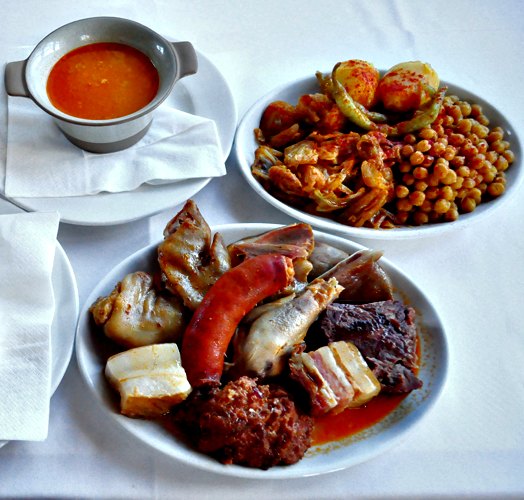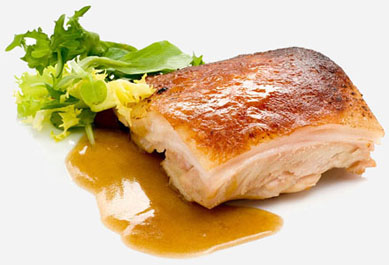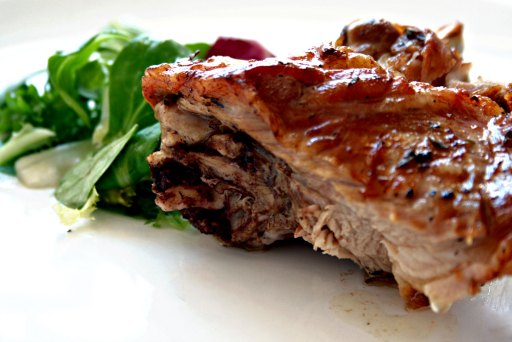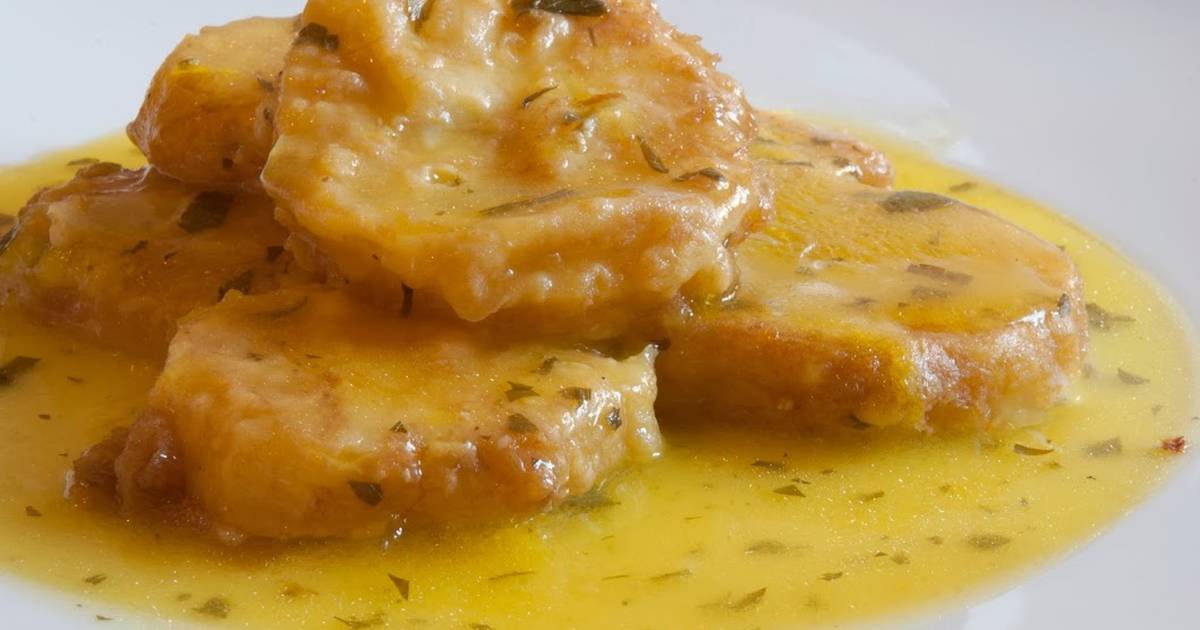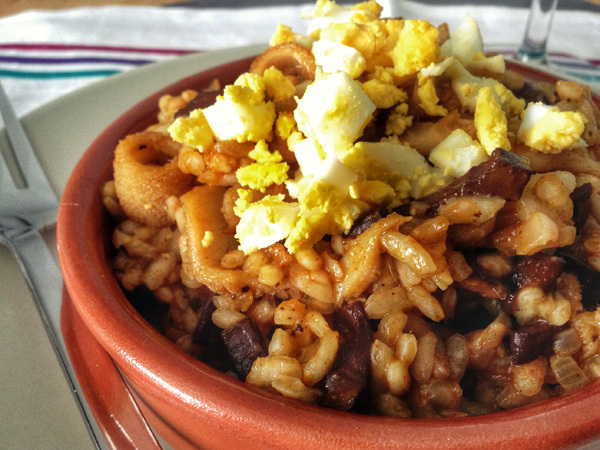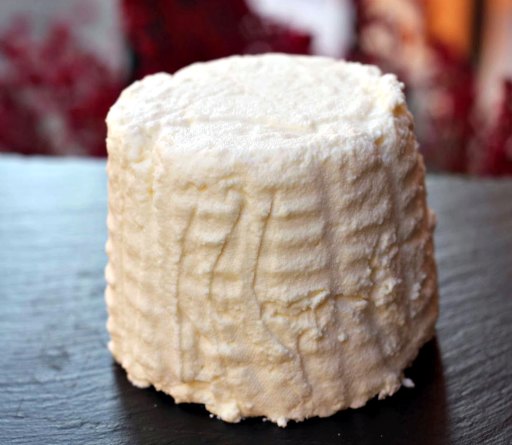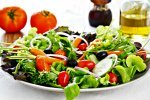Castilla-Leon, modern cuisine, roasts and much more
Castilla-Leon is the largest of the Spanish Autonomous Regions. It is comprised of nine provinces which share flavours and tastes but conserve their own traditions. Traditions of huge historical and artistic richness which are gastronomically reflected, together with Extremadura and Castilla la Mancha, in its nickname "España del Asado" (Spain of the Roast). Without a doubt, Castilla-Leon is best known for its roast suckling pig and lamb.
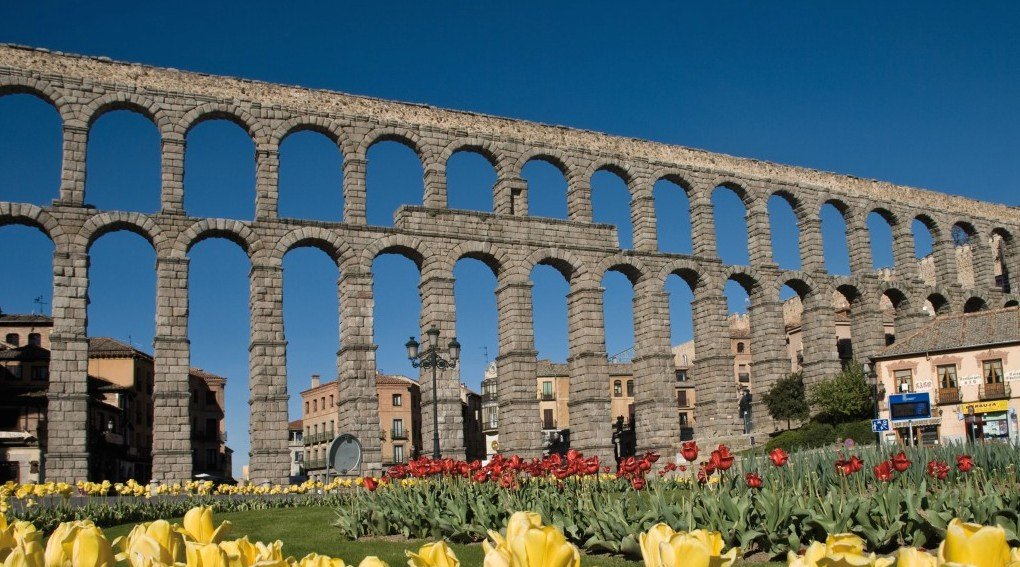 The Aqueduct of Segovia is one of the most significant and best-preserved roman monuments left in Spain
The Aqueduct of Segovia is one of the most significant and best-preserved roman monuments left in SpainThese may be the main dishes of the local cuisine, but they are by no means the only ones. There are many others well worth trying which are prepared with all sorts of different ingredients. For Castilla-Leon, cooking is almost a cult.
The visitor only has to witness one of the many food conferences which can be dedicated to lamb, to pork, to game, to wild mushrooms etc. or take part in the age-old ritual called the "matanza" (home butchering), or visit the international trout week, to see just how important quality cooking is to the locals.
Yemas de Santa Teresa: These sweet egg yolks are found all over Spain, but they are usually associated with Castile, and especially Ávila, the birthplace of Saint Teresa.
There are numerous books and novels which make reference to the local cooking, including Cantar de Mío Cid, which raves about its culinary delights. In Castilla, the chef prepares his dishes with great care: lamb, hare, rabbit, partridge, pork, fried breadcrumbs, trout and pickles.
This care is also reflected in the sweets, some of which are traditional recipes from old monasteries and convents, as can be seen in the name: "lazos de San Guillermo" (bow-shaped pastries), "yemas de Santa Teresa" (egg yolk confection), "toscas de la Virgen", "bizcochos de San Lorenzo" (sponge cakes), "virutas de San José" (fritters) which have often satisfied the hunger the pilgrims on the Camino de Santiago.
Hot food for a cold climate
Soups, which can be light, thick or substantial, such as garlic soup, which tastes even better when an egg is poached in it, trout soup, typical from Órbigo de Leon, and Zamora soup, which is basically garlic soup with ripe tomatoes and hot chilli peppers - excellent for keeping away the cold.
No other region of Spain produces such quantity and variety of pulses: white, red and black beans, Castilian and "Pedrosillano" chickpeas, various types of lentils, including the Armuña, which is protected by the Denomination of Origin.
All these pulses are used to make excellent dishes, generally accompanied by poultry and pork products. Worth special mention is "Cocido Maragato", which is prepared with great care and served in a different order than usual.
Trout from Leon and Zamora are famous for being the best in Spain. Although they are not very large, due to the cold water in which they reside, their muscles have been developed by the choppy and sometimes quite rough waters, giving this fish an excellent taste.
Cocido maragato: Maragatería is a county in the province of León, well known in Spain for its beautiful medieval architecture and for its cocido maragato. The cocido owes much of its fame to its use of two local products, spicy chorizos and cecina (salted beef), and to the fact that it is the only Spanish cocido that is eaten in reverse order: the meats and sausages are served first, followed by the legumes and vegetables, and finally the soup.
Cured hams and sausages
"Botillo" is a regional emblem of Leon. The pig's stomach is stuffed with abundant meat from the spine, ribcage and tail and boiled. For the locals, this meal is a kind of ritual and they eat it accompanied by potatoes.
Hot spicy chorizo and cecina (cured meat) are the starters served at this feast and those who have been lucky enough to participate describe it as nectar. Sausages and cured ham from Guijuelo (Salamanca) and Ledrada, black pudding from Burgos, "farinato" from Ciudad Rodrigo (sausages stuffed with bread and pork fat), sausages from Zaratán (Valladolid) and chorizo from Villar Cayo (Burgos) and Cantimpalos (Segovia) are just few examples of the very wide variety of pork products which were traditionally the main source of protein.
Cured ham and sausages from Guijuelo (Iberian pork exclusively fed on acorns) can be compared with the better Jabugo ham from Huelva or Extremadura. The Castilian countryside is a land of doves, pigeons and other game.
Logically this is reflected in its gastronomy by such dishes as pigeon stuffed with the boletus wild mushroom and roasted or doused in wine, the excellent partridges cooked Segovian style, the quails in breadcrumbs or the rabbit in garlic sauce. "Empanadas" (meat or fish pastries), similar to those from Galicia are found in El Bierzo, hearty "hornazos" (sausage and egg tarts) at Avila, Segovia and Salamanca. These are just a few examples of simple country fare which has been converted into festive dishes and recognised for their culinary quality.
 | Ultimate Spanish Feast Gift Box: Give the gift of a full tapas party in a box! Sharing small plates of delicious tapas is a great way to bring family and friends together. This beautiful gift box features our favorite sausages, snacks, treats and desserts, each one a customer favorite. No preparation is needed, just open and serve! In just a few minutes your friends and family will be enjoying the best that Spain has to offer. Serves 10 to 12 people |
Wines
The wines from Castille-Leon with Denomination of Origin are Cigales, Bierzo, Ribera del Duero, Rueda and Toro.
The rosé wine is the most appreciated wine of the Cigales variety, whereas wines with the Bierzo or Ribera del Duero D.O. are mainly intensely red.
Rueda wines are white, with a pallid yellow colour and generally young. The wines of the D.O. Toro tend to be very fruity.
Ribera del Duero is one of the best wine-producing regions in the world, with the legendary Vega Sicilia at the head.
Castilla y Leon Recipes
Cochinillo asado: You’ll find this dish served all over Spain, but it is typically Castilian. Segovia, famous for its Roman aqueduct, is also well known for its wonderful cochinillos, or “suckling pigs,” which many local establishments specialize in roasting to perfection. Throughout Castile, most cities and even small villages also have restaurants that serve cochinillos to the delight of residents and tourists alike.
Cordero asado - Roasted Lamb: This recipe serves 8-10 people with one half of a lamb, weighing 9-11 pounds. Lamb in the USA is generally very large, since the most popular cut seems to be leg of lamb and we slaughter lambs that are much older than it is customary to do in Europe. So, if you are unable to buy a suckling lamb through your local butcher, purchase a leg of lamb (bone-in).
Patatas a la Importancia: The potatoes in this dish gain “importance” when fried in a simple batter of flour and egg. The dish used to be common in many homes, especially in Madrid, and although many younger families have forgotten about it, patatas a la importancia is still a classic among the older crowd. It is a wonderful appetizer, but it can also be served as a small meal, especially for children. Although you can fry the potatoes, arrange them on a platter, top them with the hot sauce, and serve them right away, they taste a bit better if you heat the fried potatoes and the sauce together on the stove top or in the oven.
Chanfaina de Salamanca (Salamanca's Sunday Rice): The city of Salamanca, with its monuments built of golden sandstone, is home to one of Europe's oldest universities. While the city itself needs no introduction, this ancient and unusual dish does. Chanfaina is usually served on Sundays as a tapa at the city's bustling bars, where parents go with their children for a little snack before returning home for lunch.
You may be also interested in...
Castilla-Leon Products
|
The so-called Burgos cheese takes its name from the Castilian city where it is made. It is a fresh, soft, watery cheese made with sheep's milk. It is considered to be one of the most prestigious cheeses from Castilla y León, together with Villalón. It has a cylindrical shape, with grooves channeled down its sides and grooves marked on its surface. |

